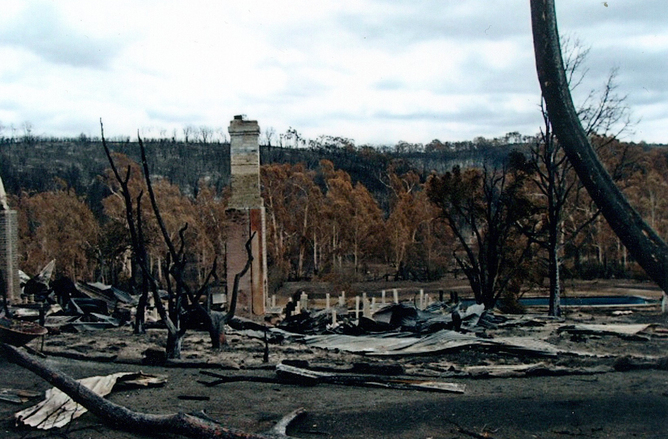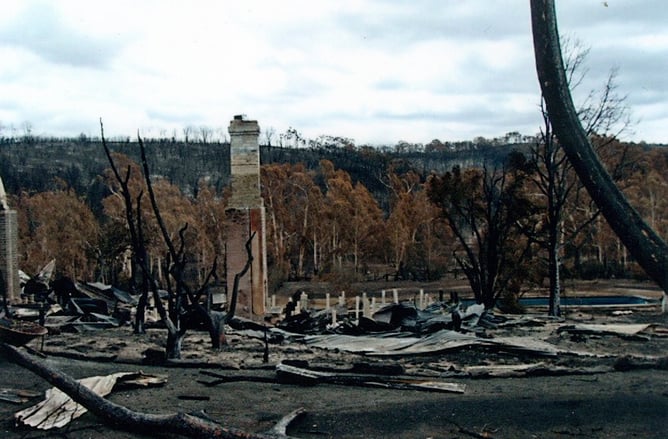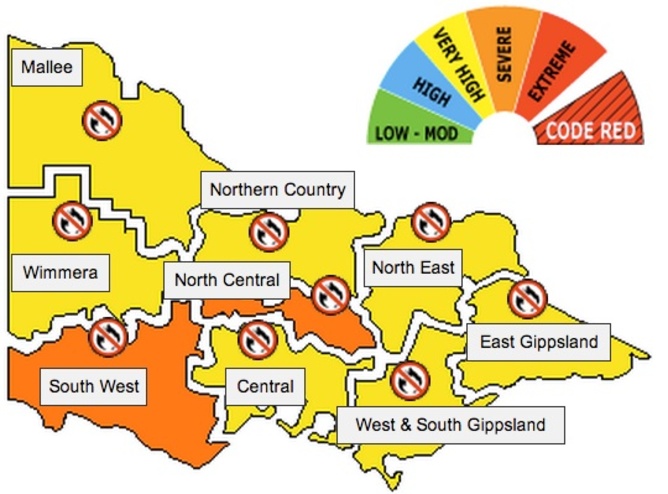With more heatwaves to come, how will our cities hold up?

With more heatwaves to come, how will our cities hold up?
By Jane Mullett, RMIT University and Darryn McEvoy, RMIT University
Australia’s south east is currently sweltering under an intense heatwave, one that is likely to become the second longest heatwave on record in the region.
So what have we learnt from the heatwave of 2009, also responsible for the Black Saturday fires, and how will our cities hold up after days of extreme heat?
This week in Melbourne and Adelaide daytime temperatures have exceeded 40C for at least the past three days and night-time temperatures have been in the high 20s. Today is also expected to be the most dangerous day for bushfires, with winds prompting the emergency services warning:
Fire Danger – Generally Severe, reaching Extreme in the west.
Back in the 2009 heatwave, the human cost was severe in Melbourne with 374 deaths attributed to heat and 173 lives lost to bushfires.
A report funded by the National Climate Change Adaptation Research Facility (NCCARF) not only highlighted this human cost but also the vulnerability of infrastructure that supports the functioning of our cities.
The major heat impacts on urban infrastructure and services were failures to the electrical system, direct and indirect impacts on the transport network, and the additional pressure placed on emergency services due to the number of people who succumbed to the heatwave and later the severity of the bushfires.
Power out
Rolling blackouts across Melbourne in January 29-30 2009 were a result of high electricity demand (driven predominantly by the use of air conditioners). A longer more serious shutdown of supply to the west was the result of a series of failures due to a combination of heat and the age of equipment.
Heat also caused train lines to buckle resulting in slowdowns and service cancellations, hundreds of people were stuck in the underground rail loop when the electricity cut out and many roads were without traffic signals.
Lethal bushfires, some of which were started by electrical failures, swept through country towns on February 7 2009 destroying more than 2,000 homes. As a result emergency services – particularly ambulance, fire and hospital emergency services – were stretched to almost breaking point.

Learning from experience
Since the 2009 heatwave a lot of effort has gone into understanding what happened and why.
Changes have been made to emergency management procedures and local councils have designed new heatwave plans. For example, in February 2011, the Council of Australian Governments (COAG) released a National Strategy for Disaster Resilience which takes into account the learnings from the 2009 heatwave in its emergency management handbook series.
Heatwave plans are now part of normal local council business. For example, the City of Melbourne has an extensive heatwave response plan.
 The police in Victoria are now up to speed with South Australia and designated to manage any heatwave emergency, whereas pre-2009 there was no command level set for heatwaves.
The police in Victoria are now up to speed with South Australia and designated to manage any heatwave emergency, whereas pre-2009 there was no command level set for heatwaves.
Furthermore, the Victorian government has instituted heatwave strategies including community awareness programs, designated cool spaces, and there is new media messaging on how to survive heatwaves.
It also has a heat health alert system to local governments, hospitals, and statewide or major metropolitan health and community service providers of forecast heatwave conditions which are likely to impact on human health.
The electricity sector has also acted to reduce risk of fire and has upgraded ageing infrastructure – though whether there is enough capacity in the system to meet the peaks in demand (due to the use of air conditioners during periods of extreme heat) is yet to be seen.
Blackouts threatened
Victorian Premier Denis Napthine said on Wednesday that staged blackouts may be needed in order to manage electricity supply.
Work has also been carried out to reduce the buckling of train lines and timetables have been adjusted for periods of hot weather.
Emergency services are on high alert and there is no longer the institutional complacency that greeted the 2009 heatwave.
The South Australian government also provides guidance to deal with extreme heat.
Is it enough?
The urban fabric is clearly under stress from the current heatwave. The Australian Energy Market Operator has indicated that Victoria and South Australia have recorded the highest levels of electricity consumption since January 2009.
As a consequence of both the heat and high demand, there have been a series of power losses due to equipment failure, with a number of Melbourne neighbourhoods affected by blackouts. There is the possibility of “planned” rolling blackouts to reduce demand on the system. Trains are travelling 10kmh below their normal speed as a precaution due to the heat and some disruption to services has occurred.
A total fire ban for the State of Victoria and for South Australia was declared for yesterday and today and there have already been numerous fires causing concern.

Australia is already vulnerable to climate variability, and these vulnerabilities are likely to be exaggerated with the projected increase in the mean temperature leading to changes in extreme weather events.
The Climate Council this week published a timely interim report that warns about more frequent, hotter and longer lasting heatwaves.
It is worth noting that this extreme heatwave comes during a period when one of the main climate drivers of droughts and floods, the El Niño Southern Oscillation weather pattern, is considered neutral and not in its El Niño phase which typically brings hot and dry weather to Australia.
This current heatwave in Melbourne will last a day longer than in the 2009 and the night temperatures are significantly higher. Bureau of Meteorology data shows that minimum night temperature for this current heatwave includes Tuesday night 28.6C, and Wednesday night 27C and the forecast for Thursday is 29C. In Adelaide the heatwave will last for five days.
Next heatwaves more severe
While lessons have clearly been learnt from the 2009 heatwave it is clear that future climate change, and more severe heatwave events, will require longer term planning.
That means an extensive upgrading of infrastructure if our cities are to be made resilient in the face of climate change and ever increasing urban populations.
This may well include thinking that goes beyond current incremental changes to more radical transformational change in how our cities function.
Jane Mullett currently receives funding from USAID. She has has received funding from the National Climate Change Research Facility (NCCARF) and the Victorian Centre for Climate Change Adaptation Research(VCCCAR).
Darryn McEvoy receives funding from a variety of national and international research funding bodies.
![]()
This article was originally published at The Conversation.
Read the original article.
The Australian & New Zealand Disaster and Emergency Management Conference discussing such issues will be held at the QT Gold Coast, 5th – 7th May 2014. This international event brings together key stakeholders involved in the prevention, management and recovery of major disastrous events, a forum to examine the issues surrounding natural and man-made hazards.
Don’t miss your opportunity to be considered as a presenter at this year’s conference.
Call for abstracts closes Monday 3rd February 2014.
The Program Committee is seeking leading industry experts to submit an abstract that is dynamic and topical and will address one of the conference streams:
| • Relief and Recovery • Risk Management • Crisis Management • Policy and Governance • Leadership • Search and Rescue • Social Media • Community Engagement • Volunteer Involvement • Animals in Disasters • Strategic Control |
• Business Continuity • Human and Social Issues • Economy and Environment • Private Sector Emergency Management • Terrorism, G20Survivor/Victim Experience Recount • Academia and Research • Education and Training • International Humanitarian Aid • Military / Army • Special Needs Groups – focus on Aged and Frail |
For more details please visit the conference website or contact the conference secretariat.
Conference Secretariat
Australian & New Zealand Disaster and Emergency Management Conference
EARTH: FIRE AND RAIN – QT Gold Coast, 5 – 7 May 2014
P: (61 7) 5502 2068 F: 07 5527 3298


